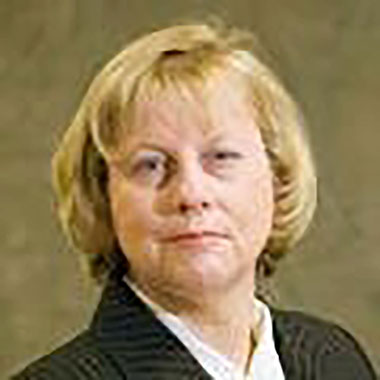Nailing the Challenging Parts of Proposals Now

Crafting compelling proposals can often be challenging. In a recent LinkedIn survey, we asked 157 bid and proposal professionals about the most difficult sections of a proposal to write. Here’s what they shared:
- Executive Summary: 46%
- Technical Section: 42%
- Management/Resume Section: 9%
- Other (e.g. Handling Questionnaires): 3%
The following paragraphs describe common challenges in creating executive summaries and technical sections while providing practical tips for addressing them.
Executive Summary Section Challenges:
- It’s an Afterthought: Often written last due to time constraints, the executive summary may lack focus and impact. Tip: Draft the executive summary early in the capture process. This approach provides time to refine the narrative and ensure it aligns with the customer’s requirements. It also enables the capture manager to use it as a briefing tool for the customer and the internal team.
- Misalignment: There can be a disconnect between the executive summary and the customer’s goals or other proposal sections. Tip: Thoroughly understand your client’s requirements and pain points. Ensure the executive summary highlights how your proposal aligns with their objectives.
- Balance: It’s crucial to strike the right balance between being concise and providing necessary detail. Tip: Describe how the technical solution meets the customer’s requirements. Offer enough detail to explain your solution, its benefits, and how it mitigates the customer’s operational risks. Consider adding a conceptual diagram to provide a high-level view of your solution.
Technical Section Challenges:
- Clarity: How can writers communicate their solution to evaluators and maximize their proposal score? Tip: Clearly describe how the technical solution works, why you selected it, how it exceeds the customer’s requirements, and how it benefits operations. Provide as much detail as possible and break down complex ideas into simple terms. Use visuals to make technical details more accessible.
- Distinctiveness: It’s essential to describe your solution’s features and benefits and how they can uniquely improve customer operations. Tip: To outscore competitors, emphasize your solution’s distinctive benefits. Every strength must have a feature, benefit, exceeds statement, and proof point. Also, use bold type, shadow boxes, icons, or graphics to highlight strengths.
- Substantiation: It’s vital to ensure the believability of your solutions. Tip: Use proof points and stories to demonstrate why and how your solution offers the best value to the customer. Consider validating your solution using third-party evaluations, CPAR scores, and customer quotes.
Conclusion
Writing winning proposals is both challenging and rewarding. By focusing on these identified pain points and implementing the suggested tips, you can craft compelling executive summaries and technical sections that resonate with your audience, enhance understanding, and ultimately increase your chances of success.
By Brenda Crist, Vice President at Lohfeld Consulting Group, MPA, CPP APMP Fellow
Lohfeld Consulting Group has proven results specializing in helping companies create winning captures and proposals. As the premier capture and proposal services consulting firm focused exclusively on government markets, we provide expert assistance to government contractors in Capture Planning and Strategy, Proposal Management and Writing, Capture and Proposal Process and Infrastructure, and Training. In the last 3 years, we’ve supported over 550 proposals winning more than $170B for our clients—including the Top 10 government contractors. Lohfeld Consulting Group is your “go-to” capture and proposal source! Start winning by contacting us at www.lohfeldconsulting.com and join us on LinkedIn, Facebook, and YouTube(TM).
Paperback or Kindle
10 steps to creating high-scoring proposals
by Bob Lohfeld
contributors Edited by Beth Wingate
Subscribe to our free ebrief
Teaming friends, frenemies, and enemies—12 tips to mitigate harmful effects
Did you know that contracting officers spend up to 20% of their time mitigating disputes between teaming partners? In an informal poll we conducted on LinkedIn last month, 40% of respondents classified their teaming partners as “frenemies” on their last bid.
Explore Further
- Advice (538)
- AI (24)
- APMP (18)
- Army MAPS Contracts (3)
- Business Development (288)
- Capture Management (262)
- Complex Technology Grants Services (25)
- Favorite Books (5)
- GenAI (3)
- Go-to-Market (27)
- Graphics (5)
- Lohfeld Books (2)
- NASA SEWP VI Contracts (2)
- Navy SeaPort-NxG Contracts (2)
- NIST MSE Grants (1)
- NIST NAPMP Grants (2)
- Past Performance (63)
- Post-submission Phase (14)
- Pre-RFP Preparation (260)
- Proposal Management (331)
- Proposal Production (72)
- Proposal Reviews (37)
- Proposal Writing (102)
- Pursuit Phase (108)
- Research Report (4)
- Resources (63)
- Tools & Tips (413)
- Training (13)
- Uncategorized (223)

Sign Up for INSIGHTS and Download your FREE book
We'd love to help you with your proposals. Enjoy our complimentary Lohfeld Consulting Group Capture & Proposal Insights & Tips book with your FREE subscription to our Insights Newsletter.
GET YOUR FREE BOOK



